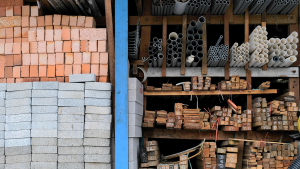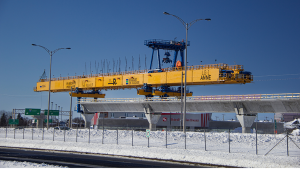Drones arrived on the construction scene a few years ago, primarily for the purpose of providing visual overviews. This was a breakthrough for marketing, client presentations and general site inspection. Now thanks to technology developments over the past couple of years, aerial drone capabilities have expanded significantly further.
“The drone platforms have almost settled in concrete today,” Michael Brown, CEO of Drone Services Canada Inc. told the Daily Commercial News. “They have really been refined. Now it’s all about changing the payload, whether it’s a camera, a laser, a sensor or a light. That’s what’s changing.”
In combination with advances in drone capabilities has come the need for construction companies to become more efficient and productive. While that might mean cost cutting in some areas, the reverse seems to be true when it comes to investment in technology, according to data released by Gartner Inc.
Specific to drone usage, a 2020 survey conducted by U.S. flight service provider DroneDeploy revealed that 90 per cent of respondents “expect to increase or maintain their spend on drones/drone software.” This includes moving beyond aerial mapping to include interior and below grade data capture. Furthermore, builders are looking to drones to provide thermal and façade inspections, and LiDAR/PointCloud mapping of excavations in combination with planning overlays.
LiDAR (Light detection and ranging) is a remote sensing technology used for measuring the exact distance of an object on the earth’s surface. A scanner, laser and a GPS receiver are the three primary components of a LiDAR instrument, in combination with photo detectors and optics for data collection.
DroneDeploy predicts an increase of over 25 per cent in 2021 for LiDAR/PointCloud capabilities incorporated into drone programmes.
This new form of data collection is vital for today’s advanced project management, according to John McKenna, CEO of UK drone services consultancy sees.ai. Addressing the complexities of modern construction in BIM Today, he writes, “Increasingly, these problems are being solved using digital tools: simulations to predict performance in the real world; BIM to capture and express the full design intent — from esthetics, structure and materials to build-sequence and budget; and reality capture to monitor progress on site — for comparison to simulations and BIM.”
COVID has only added to the growth of drones beyond the search for improved cost efficiencies. DroneDeploy reports in April and May of 2020 when the first pandemic lockdown occurred, drone flights increased by 160 per cent over the same period in 2019. By the end of 2020, the company reported a 259 per cent increase in enterprise flights versus the previous year.
Brown confirms the same level of interest in Canada.
“It’s been non-stop growth. I think COVID really pushed the envelope. Because of social distancing, people can’t be on site all the time.”
Enhanced drone capabilities are also responsible for the increased number of flights within enterprises. Previously undertaken perhaps once a month, validation flights are now often weekly and sometimes even daily, as drones find expanded purpose in today’s digital construction environment. This is due in part to the equipment payload advances to which Brown refers, such as LiDAR technology now available in drone cameras and sensors.
A company going in-house for drone services must be prepared to make major capital and logistical commitments. The investment required to keep pace with the latest in cameras and sensors can be daunting. Management must also deal with changing aviation regulatory issues, pilot training and management of increasingly complex first and third party insurance issues.
That’s why hiring third party providers like DroneDeploy or Drone Services Canada makes a lot of sense for construction companies both large and not-so-large. It’s simply a matter of describing the mission required. The provider takes it from there, flying the mission with the most advanced equipment and sending raw data back to the client, either live streaming it to a browser or processing it into useful, presentable forms using overlays and 3D modelling.
These advances give drones a growing horizon in the future.
John Bleasby is a Coldwater, Ont.-based freelance writer. Send comments and Inside Innovation column ideas to editor@dailycommercialnews.com.








Recent Comments
comments for this post are closed